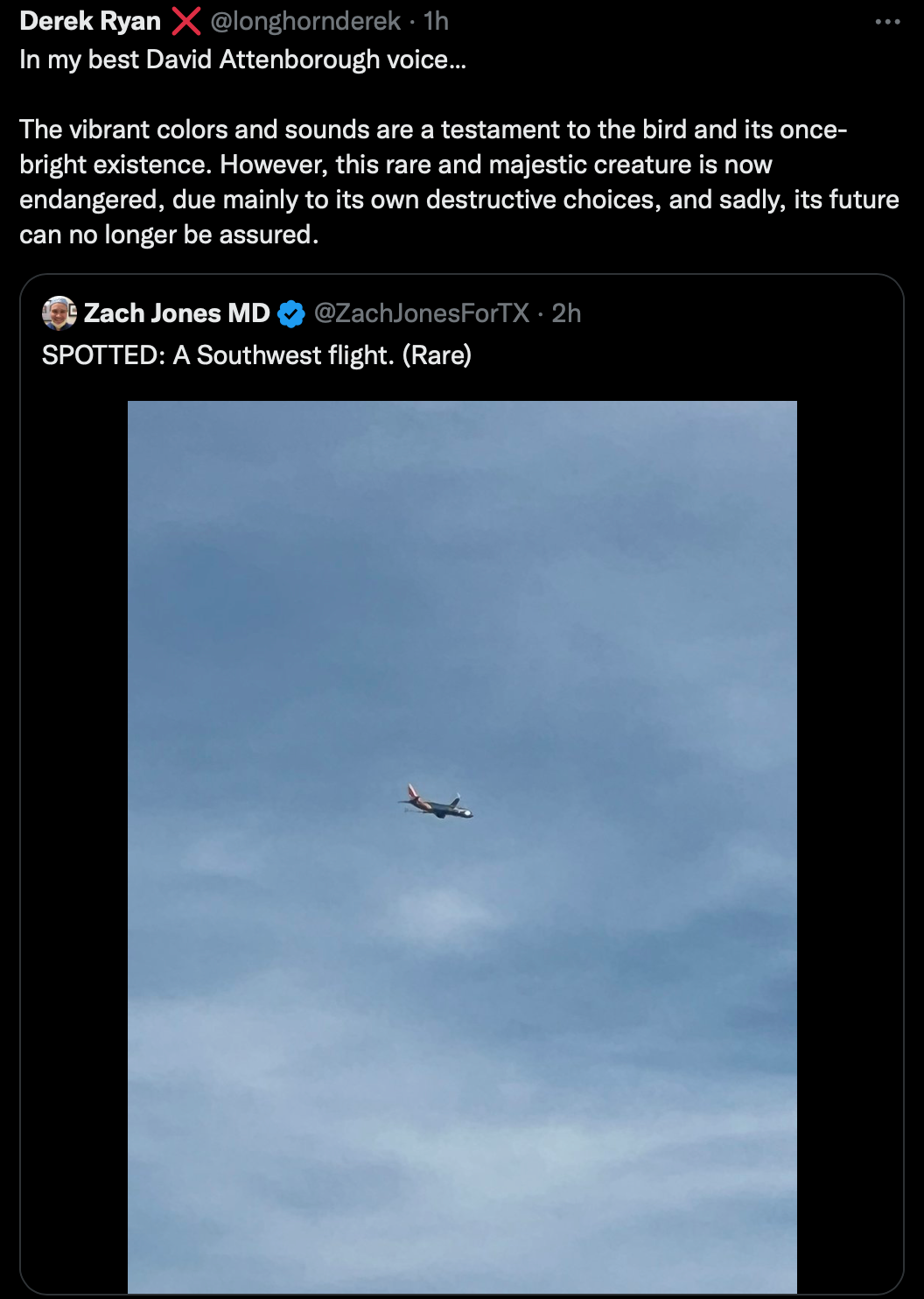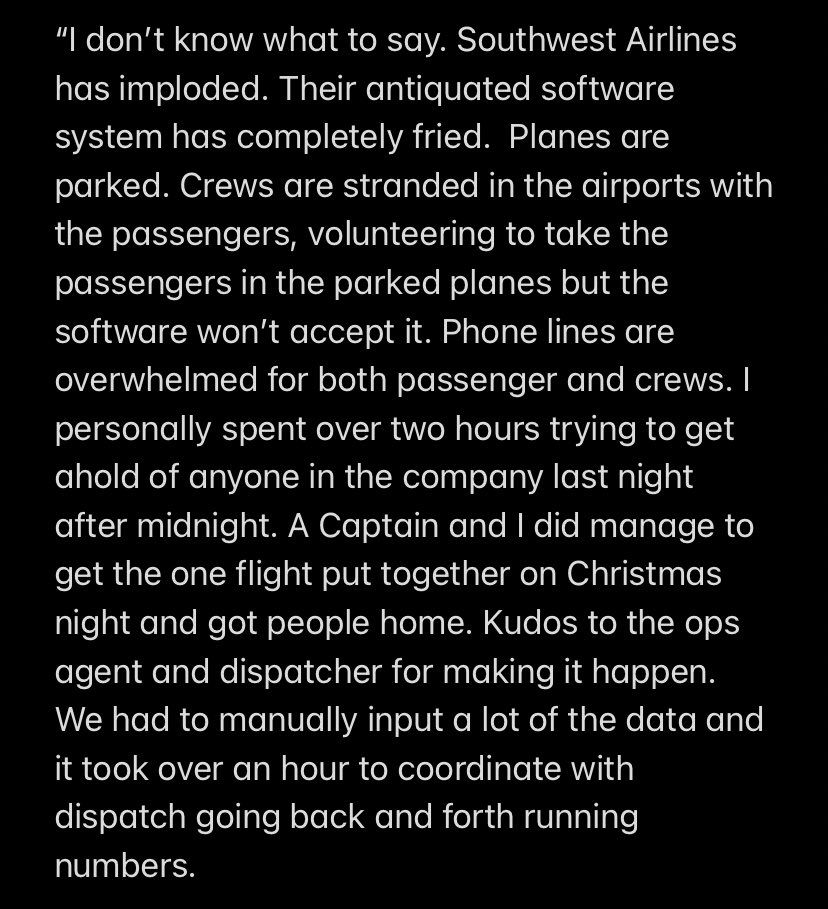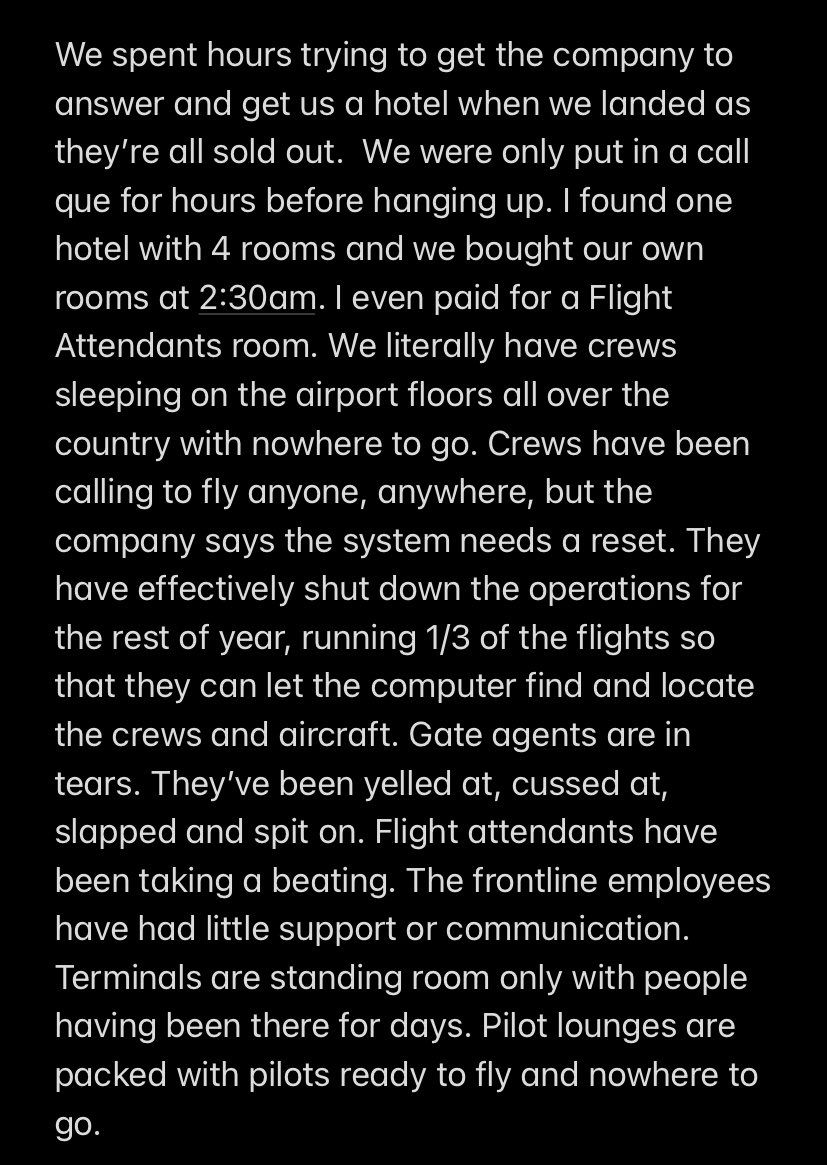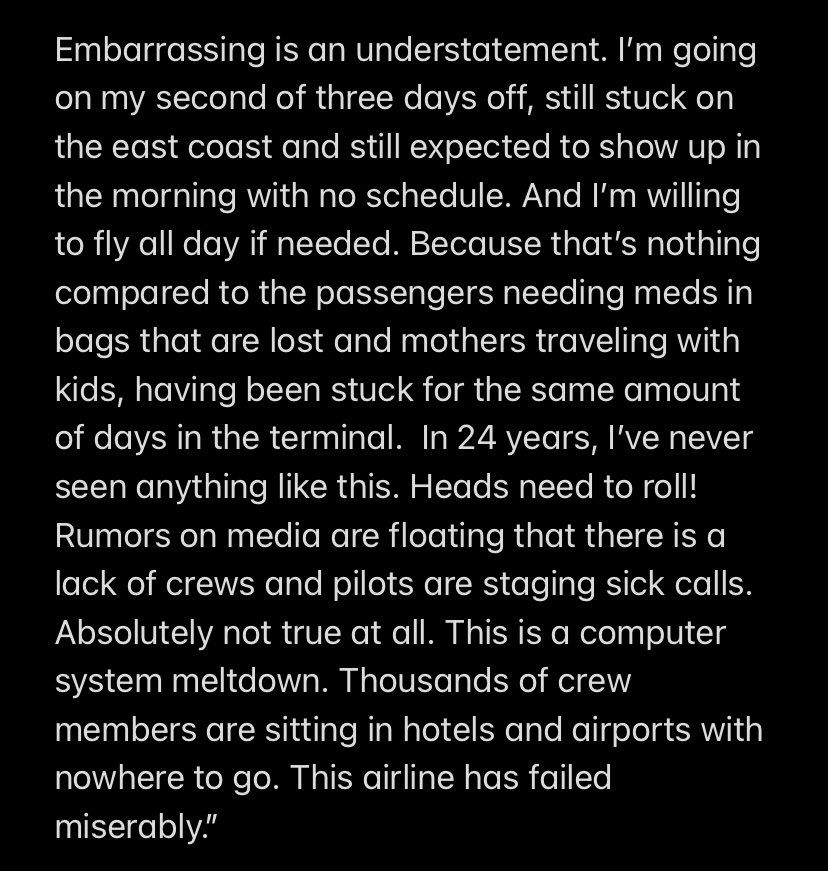The Southwest Airlines meltdown
-
At first I thought it was all weather-related...but other airlines seem to have coped.
Saw this...it's a snowball.
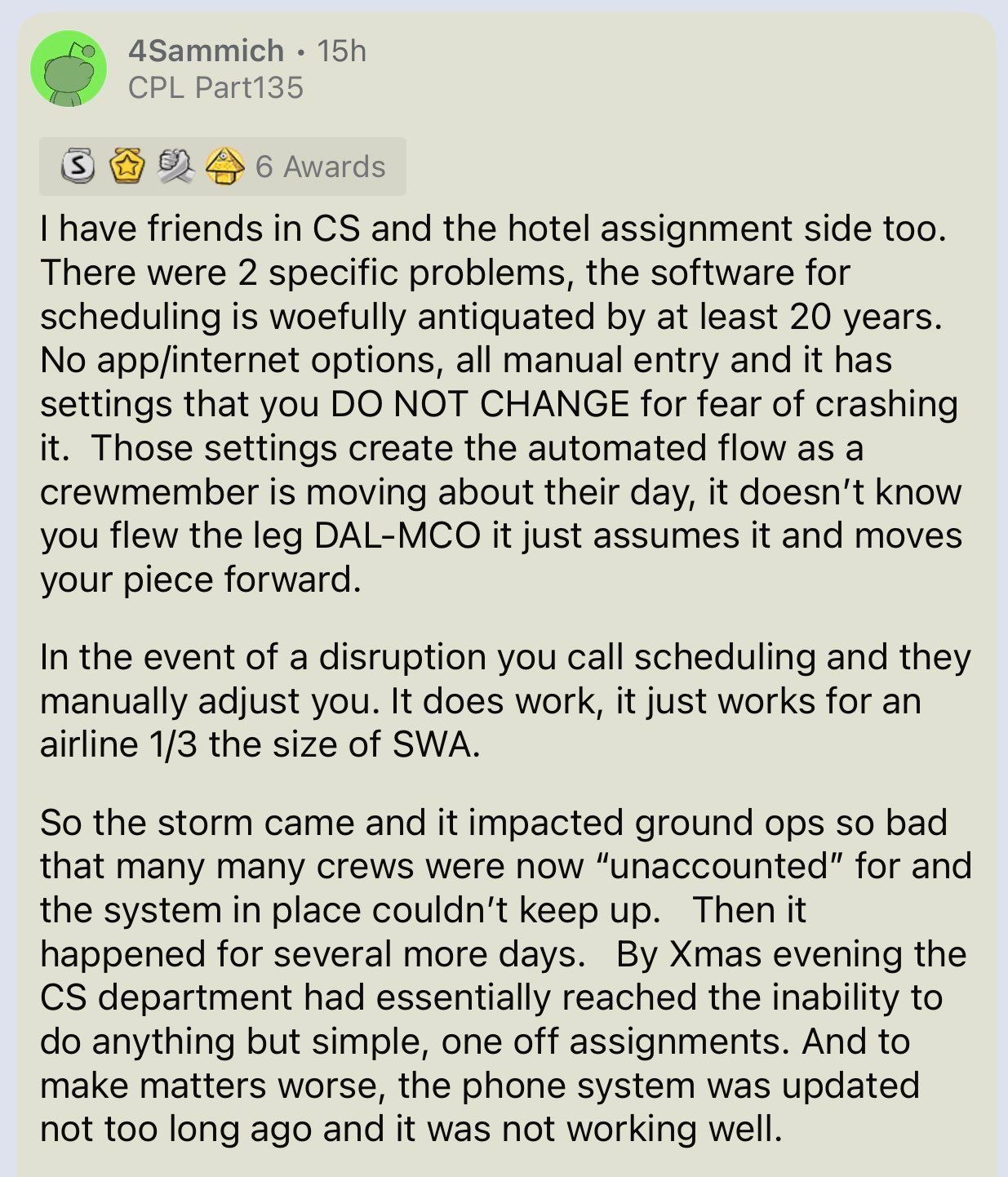
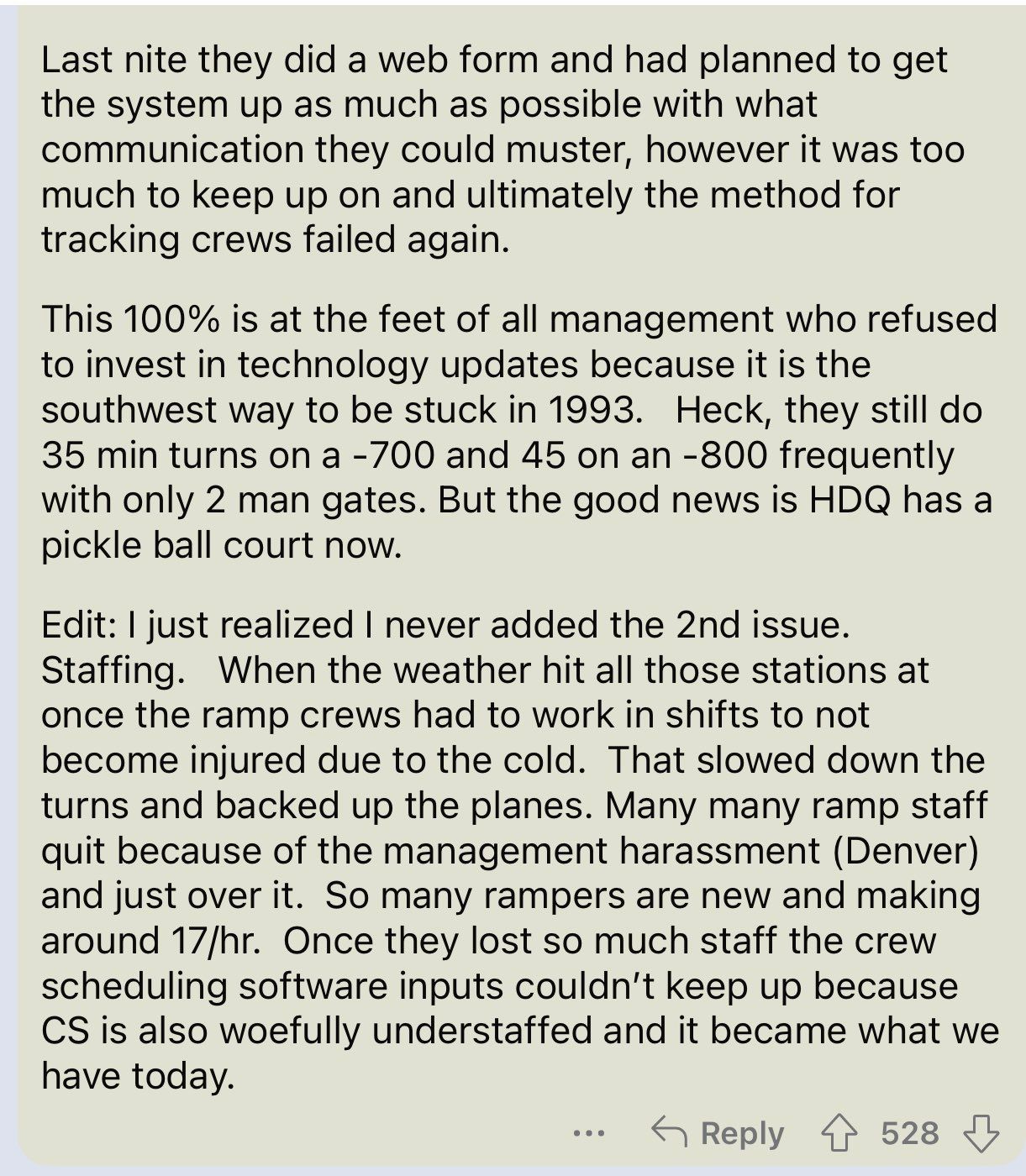
@George-K said in The Southwest Airlines meltdown:
At first I thought it was all weather-related...but other airlines seem to have coped.
Saw this...it's a snowball.


Yeah, I’ve seen a LOT of people have their holiday travel plans completely screwed even now…
-
The airlines have hated passengers for years.
Surprise, now they hate the employees.
I see more trouble ahead.
-
@Copper said in The Southwest Airlines meltdown:
The airlines have hated passengers for years.
Is there a major domestic airline that people like (or at least hate less)?
@Axtremus said in The Southwest Airlines meltdown:
@Copper said in The Southwest Airlines meltdown:
The airlines have hated passengers for years.
Is there a major domestic airline that people like (or at least hate less)?
We are fans of Delta.
-
@Axtremus said in The Southwest Airlines meltdown:
@Copper said in The Southwest Airlines meltdown:
The airlines have hated passengers for years.
Is there a major domestic airline that people like (or at least hate less)?
We are fans of Delta.
@89th said in The Southwest Airlines meltdown:
@Axtremus said in The Southwest Airlines meltdown:
@Copper said in The Southwest Airlines meltdown:
The airlines have hated passengers for years.
Is there a major domestic airline that people like (or at least hate less)?
We are fans of Delta.
+1
-
I haven't flown in over a year, and I dread my next flight.
-

My SIL and BIL are taking their sons and their girlfriends to Disney World Jan 2 - on Southwest. Hoping things get straightened out.
@Mik said in The Southwest Airlines meltdown:

My SIL and BIL are taking their sons and their girlfriends to Disney World Jan 2 - on Southwest. Hoping things get straightened out.
They may have any to consider trip insurance…
-
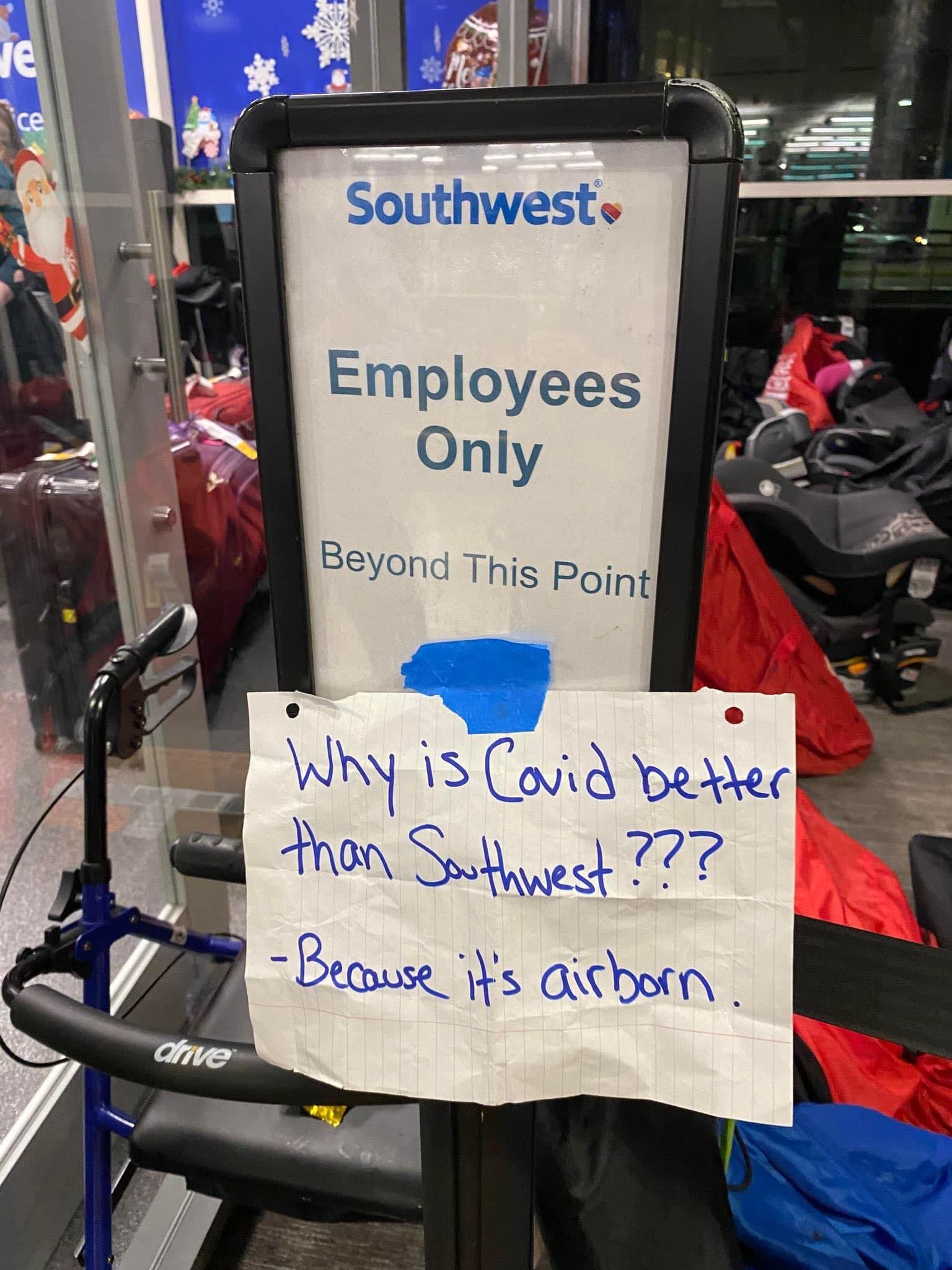
-
I haven't flown in over a year, and I dread my next flight.
@Ivorythumper said in The Southwest Airlines meltdown:
I haven't flown in over a year, and I dread my next flight.
I took about a dozen trips this year.
Notwithstanding the events of this week, I’d say air travel improved in the second half of 2022. Spring and early summer were nightmares with long lines and insufficient capacity.
-
@Ivorythumper said in The Southwest Airlines meltdown:
I haven't flown in over a year, and I dread my next flight.
I took about a dozen trips this year.
Notwithstanding the events of this week, I’d say air travel improved in the second half of 2022. Spring and early summer were nightmares with long lines and insufficient capacity.
@jon-nyc said in The Southwest Airlines meltdown:
@Ivorythumper said in The Southwest Airlines meltdown:
I haven't flown in over a year, and I dread my next flight.
I took about a dozen trips this year.
Notwithstanding the events of this week, I’d say air travel improved in the second half of 2022. Spring and early summer were nightmares with long lines and insufficient capacity.
I flew 5 or six times, and didn't have any problems. I know plenty of people who did, admittedly.
Well, to be fair, Mrs. Phibes caught Covid, and I got a horrendous stomach bug, but that's just normal degrees of hell.
-
Point-to-point method leads to meltdown
Unlike its rivals, which operate with a “hub-and-spoke” model, Southwest prides itself with a “point-to-point” business strategy that allows passengers to travel directly between smaller markets.
“We don’t have the normal hub like the other major airlines do,” Capt. Mike Santoro, vice president of the Southwest Airlines Pilots Association, told CNN Tuesday. “We fly a point-to-point network, which can put our crews in the wrong places, without airplanes.”
United, American and Delta typically fly from smaller markets to hubs, requiring passengers flying between small cities to change planes. But that model has the operational advantage of quickly flying crews and planes out of the hub to where they’re needed.
Southwest’s “point-to-point” model involves planes flying consecutive routes and picking up crews at those locations.
“When they have cancellations in one area, it really ripples through, because they don’t necessarily have their crews and their pilots in the right positions,” said Jeff Windau, senior equity analyst of equity research for Edward Jones. “They just kind of build on from city to city to city, and when that gets disrupted, it’s very difficult to get the operations flowing smoothly again.”
Santoro said Southwest’s meltdown was the worst disruption he’d experienced in 16 years at the airline.
Southwest’s outdated scheduling software couldn’t keep up with the constant changes, and quickly became the main culprit of the cancellations once the storm cleared, according to a transcript of a call Southwest Chief Operating Officer Andrew Watterson conducted with employees that was obtained by CNN from an aviation source.
Watterson explained that Southwest’s crew schedulers worked furiously to put a new schedule together, matching available crew with aircraft that were ready to fly. But the Federal Aviation Administration strictly regulates when flight crews can work, complicating Southwest’s scheduling efforts.
“The process of matching up those crew members with the aircraft could not be handled by our technology,” Watterson said.
Southwest ended up with planes that were ready to take off with available crew, but the company’s scheduling software wasn’t able to match them quickly and accurately, Watterson added.
“As a result, we had to ask our crew schedulers to do this manually, and it’s extraordinarily difficult,” he said. “That is a tedious, long process.”
Watterson noted that manual scheduling left Southwest building an incredibly delicate house of cards that could quickly tumble when the company encountered a problem.
-
Point-to-point method leads to meltdown
Unlike its rivals, which operate with a “hub-and-spoke” model, Southwest prides itself with a “point-to-point” business strategy that allows passengers to travel directly between smaller markets.
“We don’t have the normal hub like the other major airlines do,” Capt. Mike Santoro, vice president of the Southwest Airlines Pilots Association, told CNN Tuesday. “We fly a point-to-point network, which can put our crews in the wrong places, without airplanes.”
United, American and Delta typically fly from smaller markets to hubs, requiring passengers flying between small cities to change planes. But that model has the operational advantage of quickly flying crews and planes out of the hub to where they’re needed.
Southwest’s “point-to-point” model involves planes flying consecutive routes and picking up crews at those locations.
“When they have cancellations in one area, it really ripples through, because they don’t necessarily have their crews and their pilots in the right positions,” said Jeff Windau, senior equity analyst of equity research for Edward Jones. “They just kind of build on from city to city to city, and when that gets disrupted, it’s very difficult to get the operations flowing smoothly again.”
Santoro said Southwest’s meltdown was the worst disruption he’d experienced in 16 years at the airline.
Southwest’s outdated scheduling software couldn’t keep up with the constant changes, and quickly became the main culprit of the cancellations once the storm cleared, according to a transcript of a call Southwest Chief Operating Officer Andrew Watterson conducted with employees that was obtained by CNN from an aviation source.
Watterson explained that Southwest’s crew schedulers worked furiously to put a new schedule together, matching available crew with aircraft that were ready to fly. But the Federal Aviation Administration strictly regulates when flight crews can work, complicating Southwest’s scheduling efforts.
“The process of matching up those crew members with the aircraft could not be handled by our technology,” Watterson said.
Southwest ended up with planes that were ready to take off with available crew, but the company’s scheduling software wasn’t able to match them quickly and accurately, Watterson added.
“As a result, we had to ask our crew schedulers to do this manually, and it’s extraordinarily difficult,” he said. “That is a tedious, long process.”
Watterson noted that manual scheduling left Southwest building an incredibly delicate house of cards that could quickly tumble when the company encountered a problem.
@George-K said in The Southwest Airlines meltdown:
“As a result, we had to ask our crew schedulers to do this manually, and it’s extraordinarily difficult,” he said. “That is a tedious, long process.”
Give me a few months and I could automate the whole thing. It would be flawless and update everything in real time, instantly.
Too bad for them I am now committed to golf and the garden and other fun stuff.
